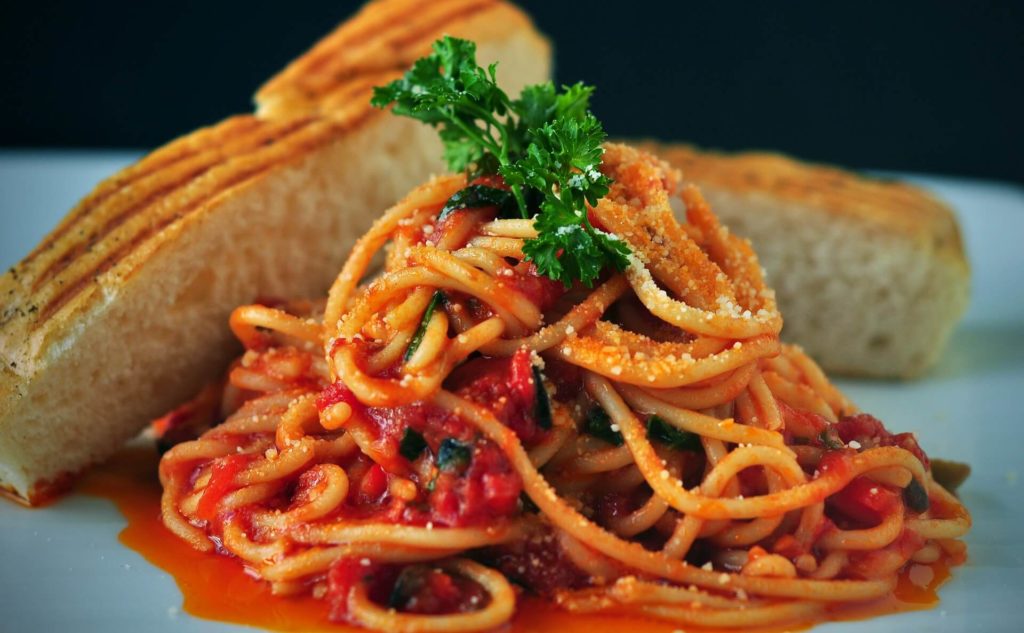Italian cuisine is loved worldwide for its rich flavors and diverse dishes. From pasta to pizza, it has something for everyone.
Italian food has a long and fascinating history. It reflects the culture and traditions of Italy. Each region offers its unique specialties. The ingredients are fresh and often locally sourced. This ensures the highest quality and taste. Italian food is more than just a meal; it’s an experience.
People gather to enjoy good company and great food. The simplicity of the recipes allows the natural flavors to shine. Whether you are a foodie or just curious, learning about Italian food is a delightful journey. Get ready to explore some interesting facts that will make you appreciate this cuisine even more.
Introduction To Italian Cuisine
Italian cuisine is a beloved culinary tradition worldwide. It is known for its rich flavors, fresh ingredients, and regional diversity. Each dish tells a story of Italy’s history and culture. Let’s dive into some fascinating aspects of this delightful cuisine.
Historical Roots
Italian cuisine’s roots go back to ancient Roman times. Romans enjoyed simple dishes made from local produce. Over time, influences from neighboring countries enriched their recipes. The introduction of tomatoes, potatoes, and corn in the 16th century revolutionized Italian cooking.
Regional variety is a key feature. Each region has its own specialties. Northern Italy is famous for risotto and polenta. Southern Italy offers pasta and pizza. Central Italy boasts delicious meats and cheeses.
Global Influence
Italian cuisine has a significant global impact. Immigrants brought their culinary traditions to other countries. This spread Italian food worldwide. Today, you can find Italian restaurants in almost every city. Pizza and pasta are household names.
Italian cooking techniques have influenced global culinary trends. Chefs around the world incorporate Italian methods into their own cooking. The use of fresh, quality ingredients is a hallmark of Italian cuisine. This principle has inspired many to cook with care and passion.
Italian cuisine also emphasizes the importance of family and community. Meals are an opportunity to gather and share. This tradition resonates globally, fostering a sense of connection and belonging.

Regional Specialties
Italy is a land of diverse culinary traditions. Each region boasts unique flavors and recipes. Let’s explore some fascinating regional specialties from the north and south of Italy. These regional dishes highlight the rich culinary heritage of this beautiful country.
Northern Delicacies
Northern Italy offers hearty and rich dishes. The cooler climate influences the cuisine. Here are some popular northern specialties:
- Risotto: Creamy rice dish, often made with saffron (Risotto alla Milanese).
- Polenta: Cornmeal mush, served with meat or cheese.
- Osso Buco: Braised veal shanks, typically served with risotto.
In the north, you will also find a variety of delicious cheeses. Gorgonzola and Parmigiano-Reggiano are just a few examples. These cheeses add depth and flavor to many dishes. The food is often rich and comforting, perfect for colder weather.
Southern Flavors
Southern Italy is known for its bold and vibrant flavors. The warmer climate supports a different range of ingredients. Here are some famous southern specialties:
- Pizza: Originating from Naples, thin crust with fresh toppings.
- Pasta alla Norma: Pasta with eggplant, tomatoes, and ricotta salata.
- Arancini: Fried rice balls stuffed with meat, cheese, or peas.
The south also features an abundance of fresh vegetables, olive oil, and seafood. These ingredients are staples in many southern dishes. The cuisine here is lighter and often highlights the natural flavors of the ingredients.
| Region | Popular Dish | Main Ingredients |
|---|---|---|
| Northern Italy | Risotto alla Milanese | Rice, saffron, broth, cheese |
| Southern Italy | Pizza Margherita | Dough, tomatoes, mozzarella, basil |
Both regions offer unique and delicious culinary experiences. By exploring these regional specialties, you can truly appreciate the diversity of Italian cuisine.
Staple Ingredients
Italian cuisine is known for its simple, yet rich flavors. Many staple ingredients form the base of most dishes. These ingredients give Italian food its unique taste. Let’s explore some of these key components.
Olive Oil And Vinegar
Olive oil is a cornerstone of Italian cooking. It’s used for frying, dressing salads, and even drizzling over dishes. Extra virgin olive oil, the highest quality, is preferred for its rich flavor.
Another essential ingredient is vinegar. Balsamic vinegar, known for its deep, sweet taste, is a popular choice. Italians use it to enhance salads, marinades, and even desserts.
| Type | Uses |
|---|---|
| Extra Virgin Olive Oil | Dressing, drizzling, frying |
| Balsamic Vinegar | Salads, marinades, desserts |
Cheese Varieties
Italy boasts a wide range of cheese varieties. Each region has its specialty. Some cheeses are used fresh, while others are aged for deeper flavors.
- Parmesan: A hard, aged cheese with a nutty taste. Often grated over pasta.
- Mozzarella: Soft and creamy. Used in salads, pizzas, and sandwiches.
- Ricotta: Soft and mild. Commonly used in desserts and pasta dishes.
- Gorgonzola: A blue cheese with a strong, tangy flavor. Used in sauces and salads.
These cheeses add depth and richness to Italian dishes. They are a key part of Italian culinary tradition.

Pasta Perfection
Italian cuisine is incomplete without mentioning pasta. It is a staple in Italian culture and loved worldwide. From simple dishes to gourmet meals, pasta offers a variety of flavors and textures. Let’s dive into the world of pasta and explore its different types and classic dishes.
Types Of Pasta
There are over 350 different types of pasta. Each type has its own unique shape and purpose. Here are some popular varieties:
| Type | Description |
|---|---|
| Spaghetti | Long, thin strands. Perfect with tomato or meat sauces. |
| Fettuccine | Thicker, flat noodles. Often served with creamy sauces. |
| Penna | Tube-shaped pasta. Excellent with chunky sauces. |
| Fusilli | Spiral-shaped. Great for holding onto sauces and dressings. |
| Ravioli | Pasta pockets filled with cheese, meat, or vegetables. |
Classic Pasta Dishes
Italian pasta dishes are known for their simplicity and rich flavors. Here are some classic pasta dishes you must try:
- Spaghetti Carbonara: Made with eggs, cheese, pancetta, and pepper. A creamy delight.
- Lasagna: Layers of pasta, meat sauce, béchamel, and cheese. Baked to perfection.
- Penne Arrabbiata: Penne pasta in a spicy tomato sauce. Simple yet flavorful.
- Fettuccine Alfredo: Fettuccine noodles in a rich, creamy sauce. A comfort food favorite.
- Ravioli: Stuffed pasta served with various sauces. Versatile and delicious.
These dishes showcase the versatility of pasta. Whether you prefer something simple or a hearty meal, pasta has something to offer. Experiment with different types and sauces to find your perfect combination.
Pizza Passion
Pizza is more than just food in Italy. It’s a way of life. Italians take pride in their pizza. They love every bite. From traditional recipes to modern twists, pizza is always a delight.
Traditional Pizza Styles
Traditional Italian pizzas come in different styles. Each region has its own version. The most famous is the Neapolitan pizza. This pizza has a thin, soft crust. It’s topped with tomatoes, mozzarella, and fresh basil. Then baked in a wood-fired oven. Another classic is the Roman pizza. This one has a thin, crispy crust. It’s often square-shaped and sold by the slice. Roman pizzas have various toppings. From simple cheese to anchovies and capers.
Modern Variations
Modern pizza variations are popular too. Chefs experiment with new ingredients. They create exciting flavors. One popular trend is the gourmet pizza. These pizzas use high-quality ingredients. Think truffle oil, prosciutto, and arugula. Another trend is the fusion pizza. This combines Italian pizza with other cuisines. Like sushi pizza with raw fish and wasabi. Or taco pizza with ground beef and salsa.
Vegetarian and vegan pizzas are also on the rise. These pizzas use plant-based ingredients. Like vegan cheese and fresh vegetables. Gluten-free pizzas are popular too. Made with alternative flours, they cater to those with gluten intolerance.
Iconic Desserts
Italian cuisine is known for its delightful and diverse desserts. These iconic sweets are a treat for the taste buds and a feast for the eyes. From creamy delights to rich flavors, Italian desserts offer something for every palate. Let’s explore two of the most beloved Italian desserts: Tiramisu and Gelato.
Tiramisu Treats
Tiramisu is a classic Italian dessert that has won hearts worldwide. This layered dessert combines coffee-soaked ladyfingers, rich mascarpone cheese, and a dusting of cocoa powder. The name “Tiramisu” translates to “pick me up,” reflecting its energizing ingredients.
Tiramisu’s origins trace back to the Veneto region in the 1960s. Today, you can find many variations of this dessert. Some include a hint of liqueur, while others add a twist with different flavors like chocolate or fruit.
The key ingredients in a traditional Tiramisu are:
- Ladyfingers (Savoiardi)
- Espresso coffee
- Mascarpone cheese
- Eggs
- Sugar
- Cocoa powder
Each spoonful of Tiramisu offers a perfect balance of sweetness and richness. It’s a dessert that’s loved by many and is a must-try for anyone exploring Italian cuisine.
Gelato Goodness
Gelato is Italy’s answer to ice cream, but with some key differences. Gelato has less fat and air compared to traditional ice cream, making it denser and creamier. It also contains more flavor because it is served at a slightly warmer temperature.
Gelato dates back to ancient Rome and Egypt, where snow and ice were mixed with honey and fruit. Modern gelato, as we know it, was perfected in Italy during the Renaissance.
Gelato comes in a variety of flavors, such as:
- Chocolate
- Vanilla
- Pistachio
- Strawberry
- Hazelnut
Each flavor is made with fresh ingredients, ensuring a burst of taste with every bite. Gelato shops, or “gelaterias,” are common in Italy, where you can enjoy this delicious treat in a cone or cup.
Whether you prefer the classic flavors or something more adventurous, Gelato is a delightful way to cool down and satisfy your sweet tooth.
Wine And Beverages
Italy is known for its rich culinary history. Part of that heritage includes a wide range of wines and beverages. Each region has its own unique offerings. From world-famous wines to traditional drinks, there’s something for every taste.
Popular Italian Wines
Italian wines are famous worldwide. Some of the most popular wines come from Italy. Let’s look at a few:
| Wine | Region | Flavor Notes |
|---|---|---|
| Chianti | Tuscany | Fruity, with hints of cherry and spice |
| Barolo | Piedmont | Rich, with notes of dark berries and truffle |
| Prosecco | Veneto | Light, with flavors of green apple and pear |
Traditional Drinks
Beyond wine, Italy offers a variety of traditional drinks. Here are some favorites:
- Limoncello: A lemon-flavored liqueur from Southern Italy. Often served chilled as a digestif.
- Campari: A bitter-sweet aperitif made with herbs and fruit. It’s a key ingredient in Negroni and Americano cocktails.
- Grappa: A strong, distilled spirit made from grape pomace. Usually enjoyed after meals.
These beverages add to the richness of Italian culinary traditions. Whether you enjoy a fine wine or a traditional drink, there’s something to savor.
Dining Etiquette
Dining in Italy is a delightful experience. Understanding the local dining etiquette enhances the experience. Italians follow specific customs during meals, which makes dining more enjoyable and respectful.
Meal Structure
Italian meals have a unique structure. They are often lengthy and consist of several courses. Here’s a typical Italian meal structure:
| Course | Description |
|---|---|
| Antipasto | Starters like cured meats, cheeses, and olives |
| Primo | First course, usually pasta or risotto |
| Secondo | Main course, typically meat or fish |
| Contorno | Side dish, often vegetables or salad |
| Dolce | Dessert |
| Caffè | Espresso coffee |
| Digestivo | After-dinner drink like limoncello |
Eating Out Tips
When dining out in Italy, consider these tips:
- Reservations: Always make a reservation, especially for dinner.
- Dress Code: Dress smart casual. Avoid wearing beachwear.
- Timing: Lunch is from 12:30 PM to 2:30 PM. Dinner starts around 7:30 PM.
- Service Charge: Coperto (cover charge) is common. It’s not a tip.
- Wait to be Seated: Wait to be seated by the staff.
- Ordering: Order each course separately. Enjoy the slow pace.
- Paying the Bill: Ask for the bill by saying “Il conto, per favore”.
Following these tips will make your dining experience memorable and respectful.
Cooking Techniques
Italian cuisine is famous for its rich flavors and diverse dishes. The secret behind these delightful meals lies in the unique cooking techniques. Italians take great pride in their culinary traditions. They often rely on slow cooking methods and fresh ingredient usage to bring out the best in their food.
Slow Cooking Methods
Slow cooking is a cornerstone of Italian cuisine. Dishes like ragù and osso buco simmer for hours. This process allows flavors to meld beautifully. The result is tender, flavorful meat and rich sauces. Slow cooking also helps to retain nutrients. It’s a method that respects the ingredients and brings out their true essence.
Fresh Ingredient Usage
Fresh ingredients are crucial in Italian cooking. Italians prefer seasonal produce. This ensures the best flavors and highest quality. Fresh tomatoes, basil, and olive oil are staples in many dishes. These ingredients provide vibrant tastes and colors. Using fresh ingredients also supports local farmers and markets.
Italian chefs believe in minimalism. They use fewer ingredients but focus on quality. This approach highlights the natural flavors. It’s a philosophy that makes Italian food stand out worldwide.

Frequently Asked Questions
What Are 5 Food Facts About Italy?
1. Italy is famous for its pasta varieties like spaghetti and penne. 2. Pizza originated in Naples, Italy. 3. Gelato is a popular Italian dessert. 4. Italians use fresh, local ingredients in their cuisine. 5. Italian coffee culture centers around espresso.
What Is Unique About Italian Food?
Italian food is unique due to its fresh ingredients, regional diversity, and rich culinary traditions. Simple recipes emphasize natural flavors and quality. Classic dishes like pasta, pizza, and gelato are globally loved. The emphasis on family meals and seasonal produce also sets it apart.
What Are 5 Interesting Facts About Pasta?
1. Pasta dates back to 1154 in Sicily. 2. Over 600 pasta shapes exist worldwide. 3. The average Italian eats 60 pounds of pasta yearly. 4. The word “pasta” means “paste” in Italian. 5. Pasta is traditionally made from durum wheat flour.
What Are 5 Facts About Italy?
1. Italy is home to the Colosseum and Leaning Tower of Pisa. 2. Rome is Italy’s capital city. 3. Italy is famous for its cuisine, including pasta and pizza. 4. The country has 55 UNESCO World Heritage Sites. 5. Italy’s boot-shaped peninsula extends into the Mediterranean Sea.
Conclusion
Italian food offers rich flavors and delightful experiences. From pizza to pasta, each dish tells a story. Fresh ingredients and traditional recipes make Italian cuisine special. Exploring these foods brings joy and satisfaction. Trying different Italian dishes enhances cultural appreciation.
Enjoying Italian food creates memorable dining moments. So, savor the taste of Italy, and enjoy each bite!


